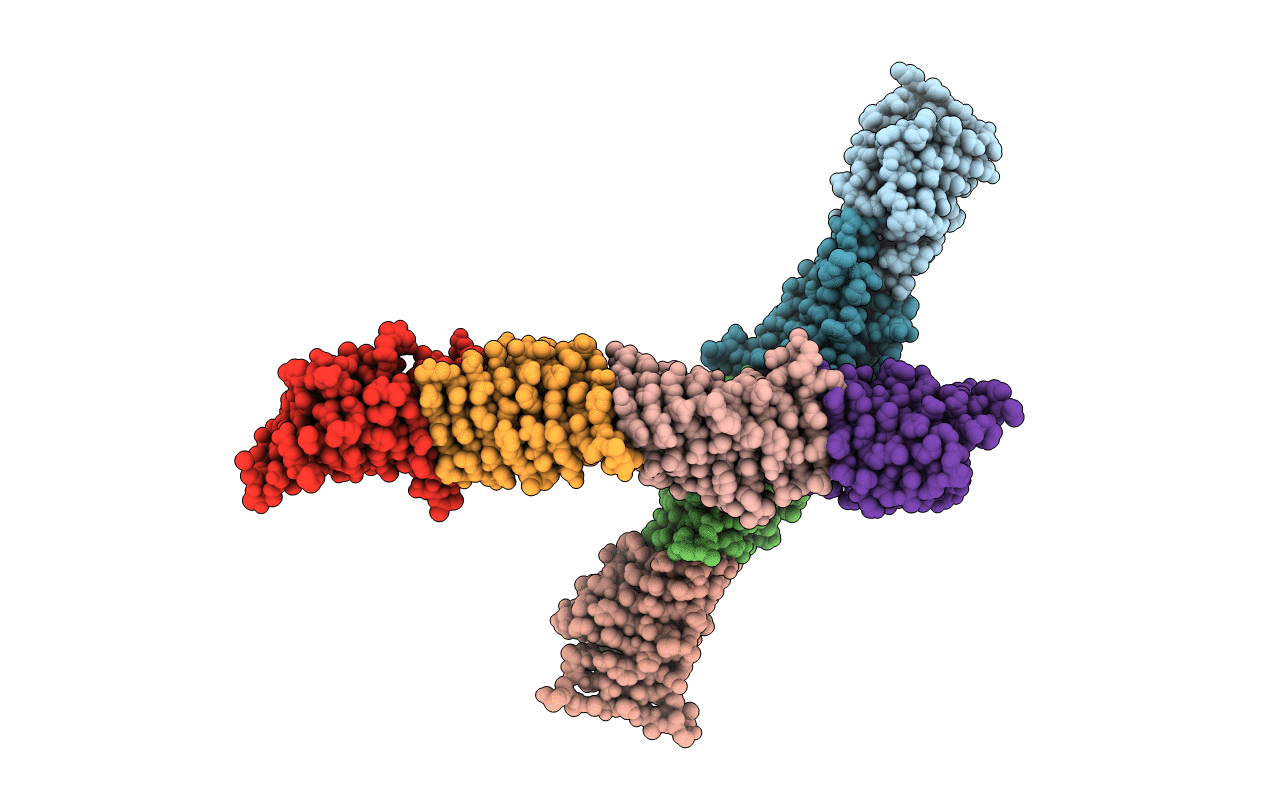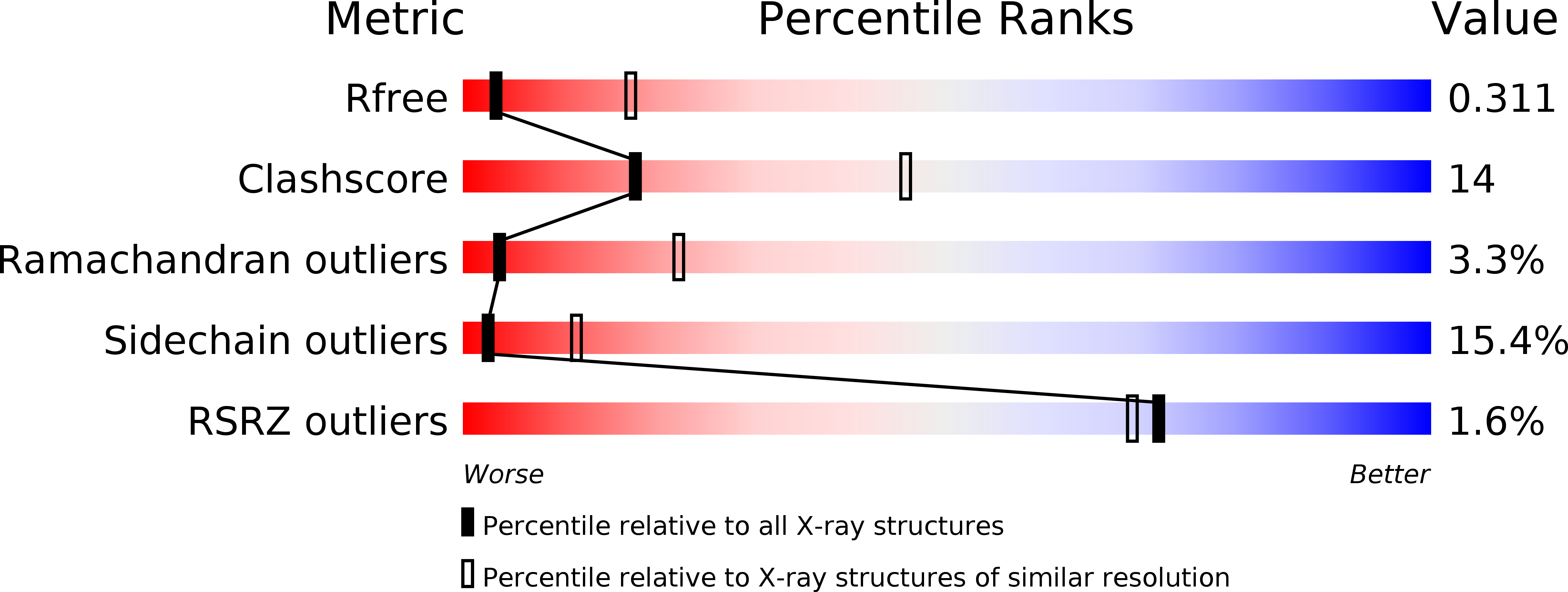
Deposition Date
2007-08-22
Release Date
2008-04-29
Last Version Date
2023-08-30
Entry Detail
PDB ID:
2R1A
Keywords:
Title:
Crystal structure of the periplasmic lipopolysaccharide transport protein LptA (YhbN), trigonal form
Biological Source:
Source Organism:
Escherichia coli (Taxon ID: 83333)
Host Organism:
Method Details:
Experimental Method:
Resolution:
3.26 Å
R-Value Free:
0.36
R-Value Work:
0.29
R-Value Observed:
0.30
Space Group:
P 32 2 1


